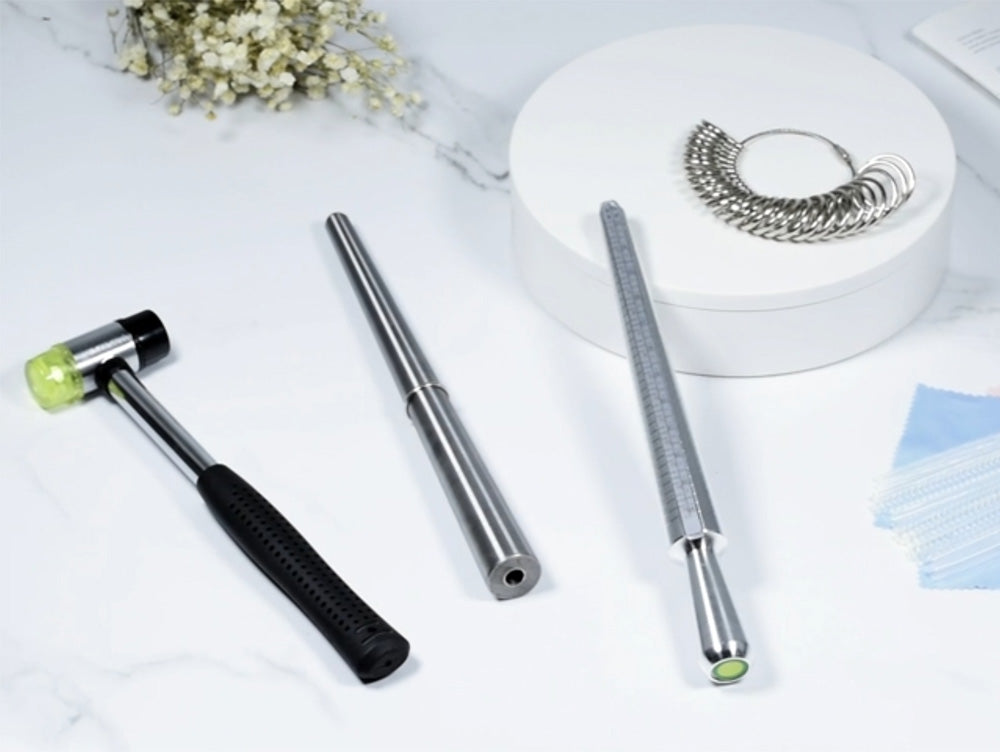Ring sizing and mandrels are foundational to ensuring that rings fit comfortably and maintain their shape during wear and fabrication. A mandrel—also known as a triblet in jewelry contexts—is a tapered tool, typically made of hardened steel, used both to measure ring size and to form or reshape rings by sliding them over its taper and applying gentle pressure. When resizing, a ring is either stretched (to enlarge) or compressed (to reduce) in diameter by tapping it down or up the taper with a rawhide mallet, maintaining roundness and alignment with precision marks on the mandrel. Accurate ring sizing combines proper measurement using calibrated sizers (paper, plastic, or metal gauges) and the mandrel’s graduated scale—typically in US, UK, or ISO metrics—to determine the true inner diameter or circumference of a ring .
Types of Mandrels and Sizers
Ring Mandrels
-
Solid Steel Mandrels: Durable and precise, marked with size graduations; used for shaping and checking sizes, including slotted versions for protecting protruding settings.
-
Triblets: Freestanding tapered cones for hand forging and truing rings with a mallet; some have circular size markings (ring size sticks) for quick measurements .
Ring Sizers (Gauges)
-
Paper/Plastic/Metal Sizer Sets: Individual rings numbered to standard sizes; used on the finger to determine the wearer’s size before fabrication .
-
Digital Ring Sizers: Electronic tools offering high accuracy and instant digital readouts of inner circumference, aligning with ISO 8653:2016 standards .
Principles of Operation
Measurement
-
Determining Existing Ring Size: Slide the ring down the mandrel until it fits snugly at a size marking. The first point of contact—the “leading edge”—indicates the ring’s true size .
-
Finger Sizing: Place successive sizer gauges on the finger until the one slides on with slight resistance, ensuring comfort across knuckles .
Resizing (Shaping)
-
Enlarging: Place the ring on the mandrel above the target size mark and gently tap downward with a rawhide mallet, rotating and re-tapping to stretch evenly .
-
Reducing: Use an adjustable ring size reducer or mandrel to compress the band; some jewelers place the ring on a smaller mandrel section and tap upward, or cut and solder to remove material .
Uses and Best Practices
Uses
-
Customization: Achieve perfect fit for custom-made rings or resizing customer heirlooms.
-
Quality Control: Verify that mass-produced rings match standard sizes within industry tolerance (±⅛ size) .
-
Repair & Refurbishing: True up misshapen rings or restore roundness after work such as stone setting.
Best Practices
-
Protect Settings: For rings with protruding stones, use slotted mandrels to avoid damage or chipping.
-
Use Rawhide Mallets: Avoid steel hammers that mar metal; rawhide absorbs impact without leaving marks.
-
Environmental Considerations: Finger sizes fluctuate with temperature, humidity, and time of day—take measurements under consistent conditions.
-
Tolerance Checking: Allow ±⅛ size tolerance; rings outside this range require more precise resizing techniques.
By mastering ring sizing techniques and proper mandrel use—from accurate measurement to careful reshaping—jewelers can ensure comfortable, long-lasting fits and maintain the integrity and beauty of their creations.



0 commenti